Plan checklist
McCarthy Shore
Stoney Point Marina Road, Kasshabog
Planting plan created by The Land Between
Schedule A:
Plants & Property
Land Characteristics
This planting plan is designed based on the land characteristics identified during the day of the site visit. Plants are chosen according to the soil and light conditions on your property. The number of plants chosen for each planting compartment takes into account the square metre area of the space, as well as the amount of current vegetation cover. Your property is part of ecoZone: 5b
Land Characteristics by Compartment
| Length | Width | Area | pH | Soil | Moisture | Light | Height | |
|---|---|---|---|---|---|---|---|---|
| A | 0m | 0m | 2m2 | sandy | moist | full sun | ||
| B | 0m | 0m | 0m2 | normal | sandy | dry | partial sun | max 2m |
| C | 0m | 0m | 0m2 | acidic, basic | dry | partial sun | ||
| D | 0m | 0m | 3m2 | |||||
| E | 0m | 0m | 1m2 | dry | shade | |||
| 0m | 0m | 6m2 |
Plant Selection Summary
The following shrubs and trees are chosen for their suitability and survivability given the current soil and light conditions in each compartment on your property, as well as preferable features.
| Plant Species | A | B | C | D | E | Potted | Bareroot | Wildflower |
|---|---|---|---|---|---|---|---|---|
| Wintergreen | 8 | 12 | 20 | |||||
| Bunchberry | 8 | 8 | ||||||
| Wild Geranium | 11 | 11 | ||||||
| Bearberry | 4 | 6 | 10 | |||||
| Lowbush Blueberry | 4 | 4 | ||||||
| Bush Honeysuckle | 3 | 3 | ||||||
| Swamp Milkweed | 4 | 4 | ||||||
| Blue Flag Iris | 6 | 6 | ||||||
| Fireweed | 8 | 8 | ||||||
| Sweet Oxeye | 7 | 7 | ||||||
| Sweet Gale | 6 | 6 | ||||||
| Subtotal | 27 | 21 | 15 | 12 | 12 | 43 | 0 | 44 |
| Totals | 87 | |||||||
Plant Information
The following table summarizes key information about each plant selected for your property.
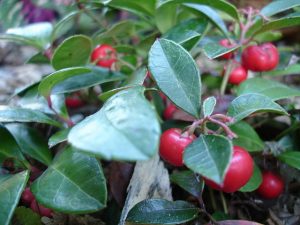
|
WintergreenHeight: 15 cm
Wintergreen is a medium-sized ground cover species that grows up to 15 cm in height. The leaves are glossy, dark-green, simple, oval shaped, and turn purple during the fall. Wintergreen is a visually appealing plant that produces small, white, bell-shaped flowers during the spring. This species yields edible, scarlet red berries during July, which persist throughout the winter months. These berries are a great food source for many song birds, squirrels, deer and a tasty treat for humans when added to pastries or salads. The name Wintergreen comes from the plants ability to keep it's leaves throughout the winter. Wintergreen is unique because their leaves emit a minty aroma when crushed. Wintergreen oil is commonly used in the flavoring of gum and toothpaste.
|
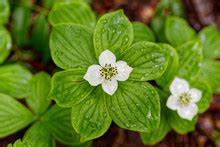
|
BunchberryHeight: 15 cm
Bunchberry is a deciduous ground cover species that can grow around 15 cm in height. This plant may also be known by the common name Creeping-Dogwood. The leaves are deep green, oppositely arranged, oval shaped, and glossy. The flowers are showy, white colored, and bloom between May and June. These flowers produce bright red berries that are edible to humans and beneficial to wildlife species, like birds and small mammals.
|
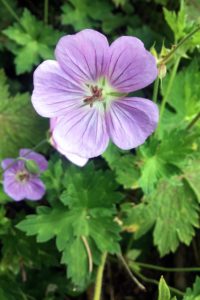
|
Wild GeraniumHeight: 70 cm
Wild Geranium is a herbaceous perennial wildflower species that grows up to 70 cm tall. The leaves on the wildflower are basal with 5-7 deeply divided toothed lobes, ranging between 10-13 cm wide. Due to the shape of the leaves, Wild Geranium is often mistaken for Canada Anemone. It is often found in meadows and forests, preferring partial to full shade with moist loamy soil. Wild Geranium is an ideal wildflower for erosion control because it forms colonies through it's rhizome system. The small petaled purple flowers attract a variety of bees and butterflies, making it a great addition to your garden for pollinators. Wild Geranium has also been used for many medicinal purposes due to its astringent properties. The rhizomes are dried and grounded to be used for mouth ulcers, inflamed gums, and sore throats.
|
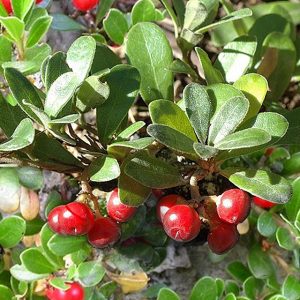
|
BearberryHeight: 20 cm
Bearberry is a low growing, evergreen shrub/ground cover species that grows about 20 cm tall. The leaves are dark green, leathery, shiny, ovate shaped, alternately arranged, and have entire margins. The flowers are tiny, urn shaped, white to pink colored, appear in drooping clusters, and bloom between April and May. Flowers are followed by bright red berries, which remain throughout the fall and winter. These berries are beneficial to wildlife species like birds and small mammals.
|
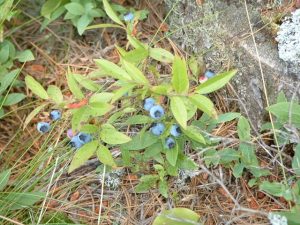
|
Lowbush BlueberryHeight: 60 cm
The Lowbush Blueberry is a low growing, deciduous shrub that only reaches about 60 cm in height. This species grows erect, with many spreading and ascending branches. New branch growth is soft and green-brown in colour, while older branches are woody and have shredded looking bark. The leaves are small, simple leaves alternately arranged, and have finely serrated margins. During the fall, this shrub's lustrous blue-green leaves turn into an electrifying bronze, scarlet or crimson colour. Clusters of small, white, bell-shaped flowers bloom between May and June. By July, the flowers give way to clusters of edible blueberries. These berries provide a significant food source for a variety of bird and mammal species.
|
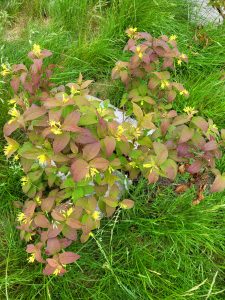
|
Bush HoneysuckleHeight: 1m
The Bush Honeysuckle is a small, hardy, deciduous shrub that rarely grows taller than 1 m in height. The leaves are simple, oppositely arranged, ovate shaped, and have finely toothed margins. During the spring and summer, the leaves are dark green in colour, then in the fall they take on a variety of colours ranging from a deep purple to light yellow. The flowers are small, showy, yellow to orange colored, trumpet shaped, appear in clusters on the tips of branches, and bloom between June and July. The flowers are beneficial to pollinator species, including hummingbirds and butterflies. The roots of the Bush Honeysuckle are fibrous, giving it the ability to form thickets and making it an ideal shrub to plant for erosion control.
|
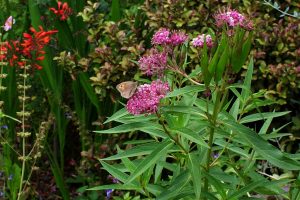
|
Swamp MilkweedHeight: 1 m
Swamp Milkweed is a beautiful wildflower species that typically grows about 1 m tall. The leaves are light green coloured, narrow, lance shaped, and oppositely arranged. The flowers are showy, fragrant, bright pink, appear in clusters on flowering stems, and bloom between July and August. The flowers give way to large, long and narrow, brown seed pods, which produce an abundance of seeds with tufts of long, white hairs. The flowers are beneficial to pollinator species, like bees and butterflies. As with all Milkweeds, the stem exudes a milky sap when broken, however the sap of the Swamp Milkweed is less milky than other species. This sap is critical for caterpillars of the endangered Monarch Butterfly to deter predators.
|
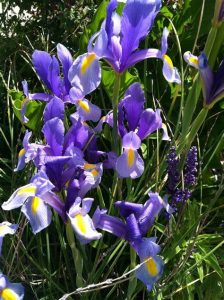
|
Blue Flag IrisHeight: 0.5 m
The Blue Flag Iris is a showy perennial wildflower that typically grows about 0.5 m in height. This plant may also be known by the common name Harlequin Blue Flag. The leaves are light green, sword-shaped, slightly arched or erect, and appear growing out as a cluster around the base of the plant. The attractive blue flowers start to bloom in the early spring, emerging from a tall flowering stalk that can reach up to 1 m. The flowers are beneficial to pollinator species, like bees and butterflies. The seeds are also beneficial to wildlife species, like birds and small mammals.
|
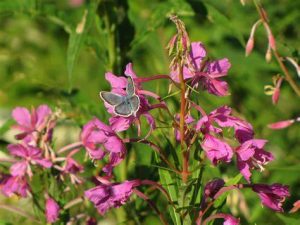
|
FireweedHeight: 1.5 m
Fireweed is a perennial wildflower species that grow up to 1.5 m in height. The stem is smooth, round, and turns from green to red towards the top of the plant. The leaves are light green coloured, alternately arranged, narrow and lance shaped, similar to Willow leaves, have a prominent central vein, and have entire margins. The flowers are showy, purple to pink coloured, have four petals and four sepals, appear at the top of the stem, and bloom between June and September. The flowers are replaced with seedpods that split into multiple sections, beginning at their tips and curling backward, releasing tiny seeds with small tufts of white hair. The flowers are beneficial to pollinator species, like bees and butterflies. This wildflower spreads well and can be used to naturalize un-vegetated areas. The roots can be useful for controlling erosion and stabilizing shorelines. Fireweed gets its name due to its ability to quickly colonize areas recently burned by fire.
|
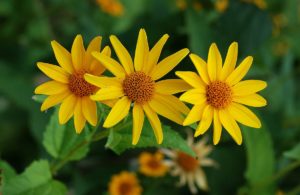
|
Sweet OxeyeHeight: 2m
Sweet Oxeye, also known as False Sunflower, is an attractive, herbaceous, perennial wildflower, which can grow to almost 2 m tall. The flowers are perched atop a stiff stem, with a brownish-yellow center cone surrounded by bright yellow to orange rays. Leaves are 5-12 cm long and 2-8 cm wide, oppositely arranged along the stem, ovate to lanceolate in shape, and have a toothed margin. This wildflower grows best in moist, well-drained soils, preferring full sun, but will tolerate partial shade. Some common natural habitats for the Sweet Oxeye are prairies, meadows, forest edges, and stream banks. Sweet Oxeye is drought tolerant so could be planted in difficult dry sites, but will grow best with regular watering. A large variety of insect species are attracted to the Sweet Oxeye, making it a great addition to a habitat garden.
|
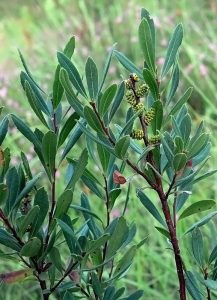
|
Sweet GaleHeight: 1-2m
Sweet Gale is a medium-sized shrub which grows into a thick bush about 1-2 m tall. This species produces 1-8 cm long, oblong-lanceolate leaves which are finely toothed at the tip and are spirally arranged. When bruised, these leaves give off a pleasant aroma. Male and female catkins are produced on separate plants. The seeds are dispersed from the female plants via water, as they float on two corky bracts. This shrub also provides a good food source for bird species that eat the seeds including Grouse, Chickadees, and Bluebirds. Mammal species like Beavers and White-Tailed Deer also browse on the twigs and leaves of this plant.
|
Compartment A
Naturalization Area
Marlene’s Garden Wild blue phlox in the outline area-8 plants Depth: wildflowers
Depth: wildflowers-
 Moisture: moist
Moisture: moist -
 Soil Type: sandy
Soil Type: sandy -
 Light conditions: full sun
Light conditions: full sun
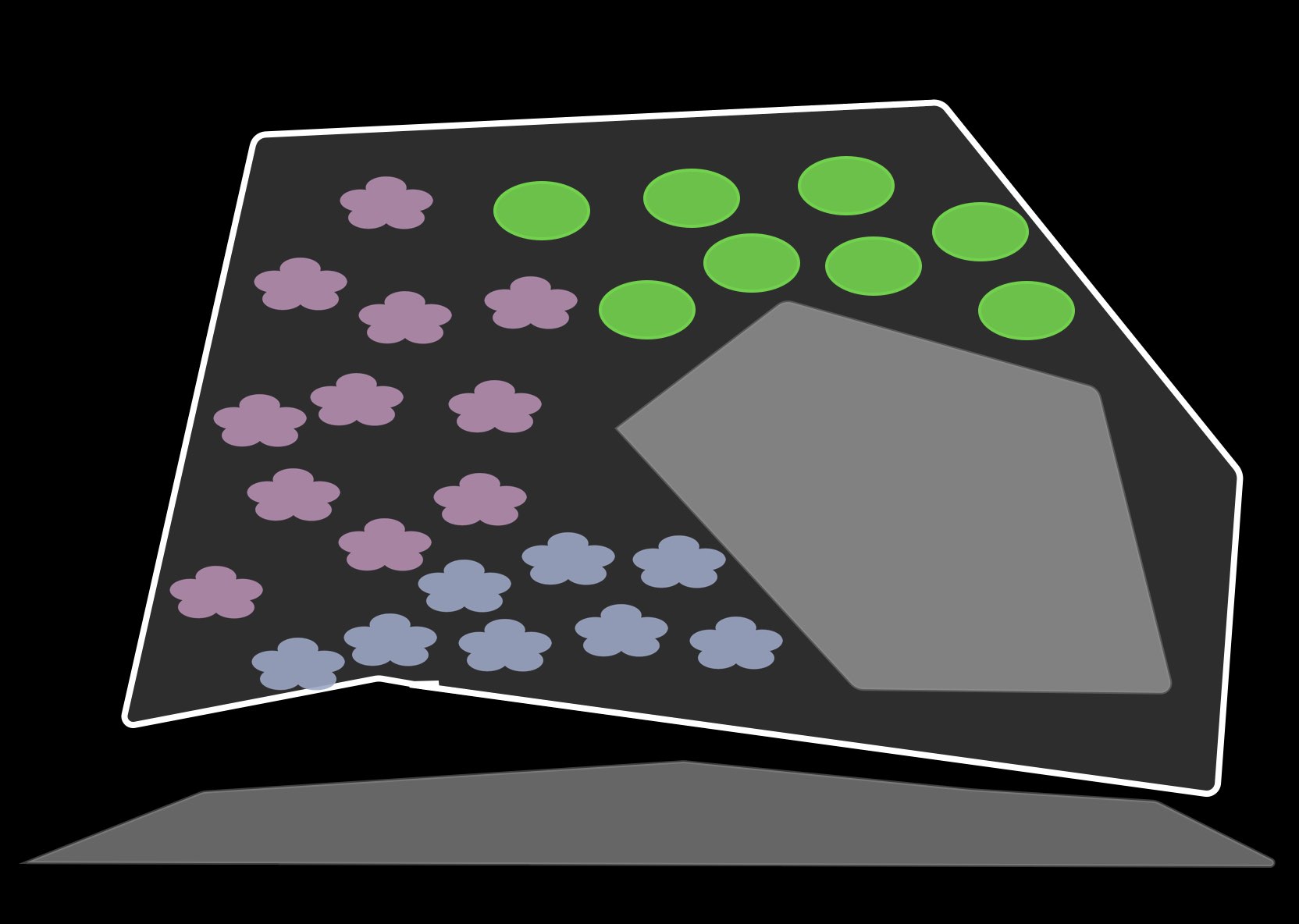
Compartment B
Naturalization Area
 pH: normal
pH: normal Depth: potted, wildflowers
Depth: potted, wildflowers-
 Moisture: dry
Moisture: dry -
 Soil Type: sandy
Soil Type: sandy  Plant Height: max 2m
Plant Height: max 2m-
 Light conditions: partial sun
Light conditions: partial sun
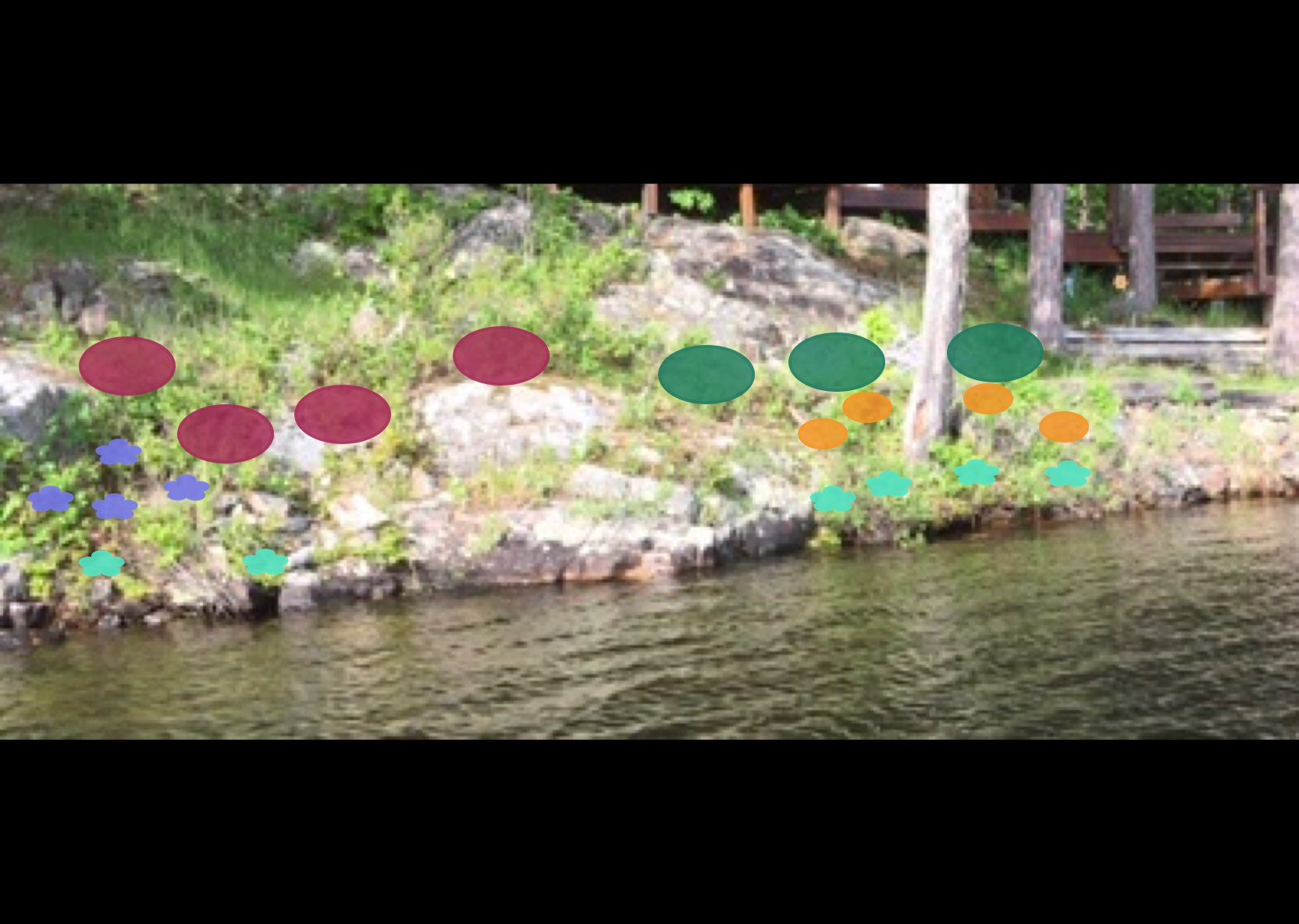
Compartment C
Naturalization Area
By dock pH: acidic, basic
pH: acidic, basic-
 Moisture: dry
Moisture: dry -
 Light conditions: partial sun
Light conditions: partial sun
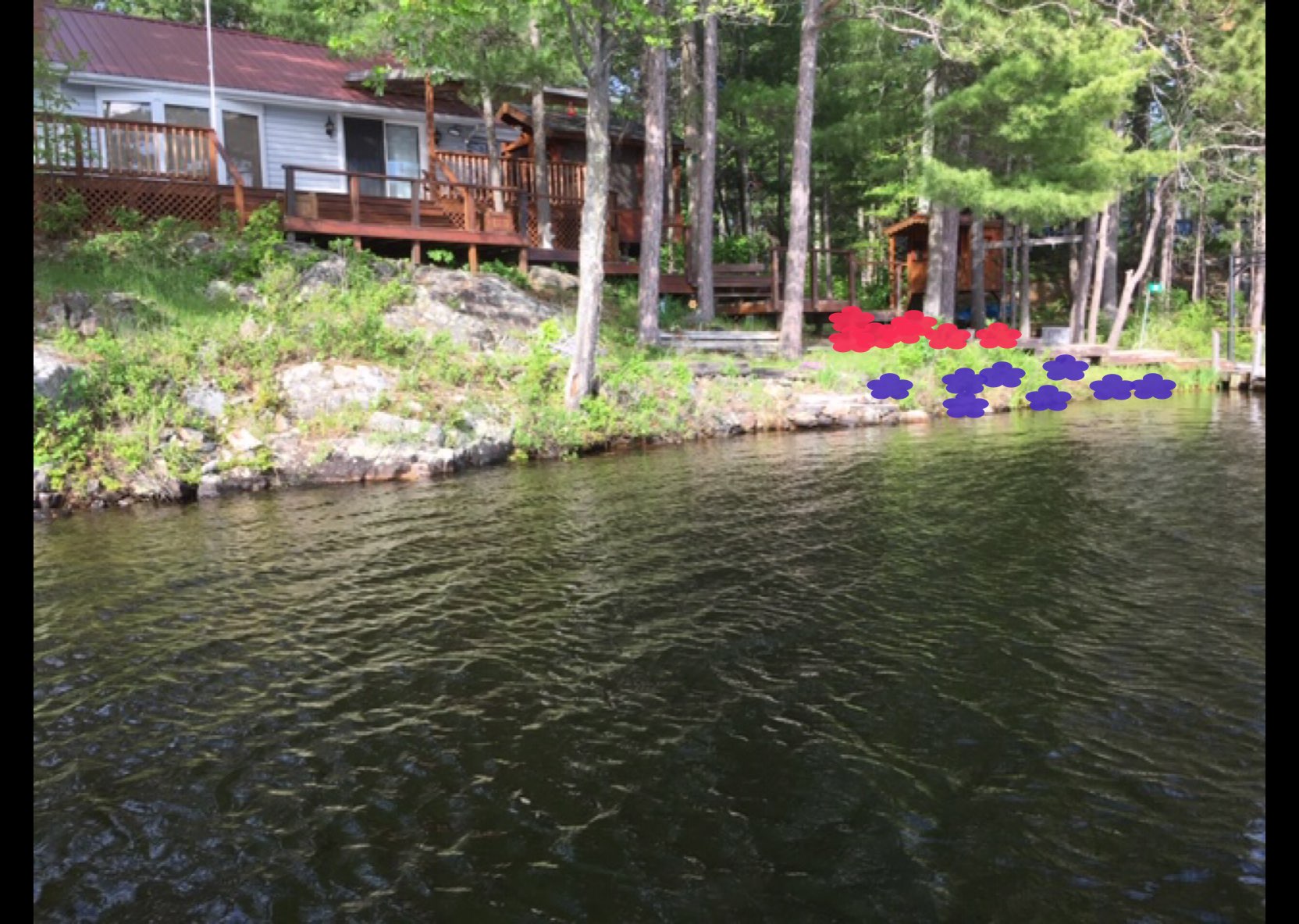
Compartment D
Naturalization Area
Side by kayaks. Needs rip rap cobble stone spread at 3 to 5 feet and 1 to 1.2 foot depth at 20 degree slope in Bay Area. Plant rock area into water with interspersed sweet game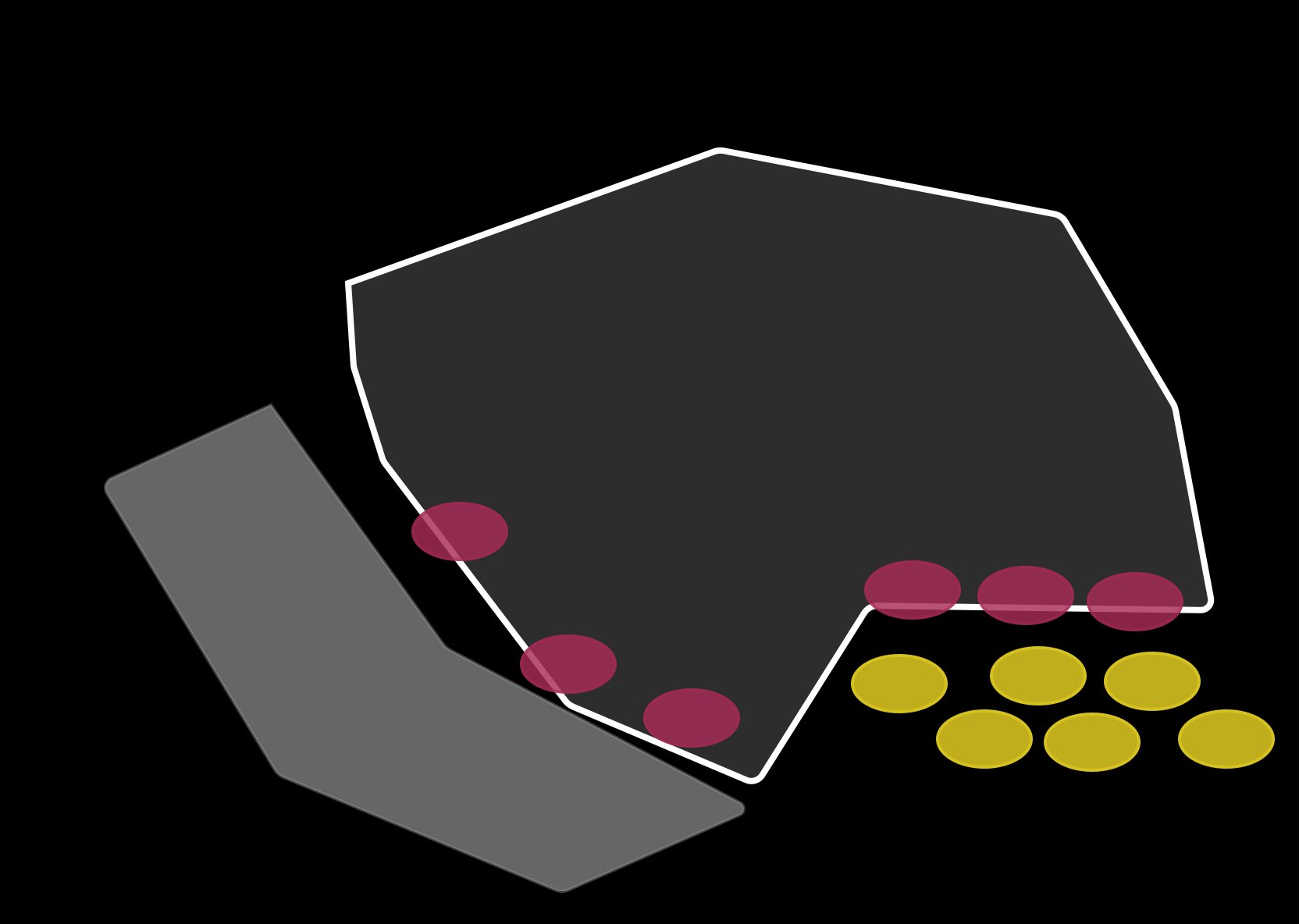
Compartment E
Naturalization Area
Area in front of deck and outdoor patio _ low area by screening-
 Moisture: dry
Moisture: dry -
 Light conditions: shade
Light conditions: shade
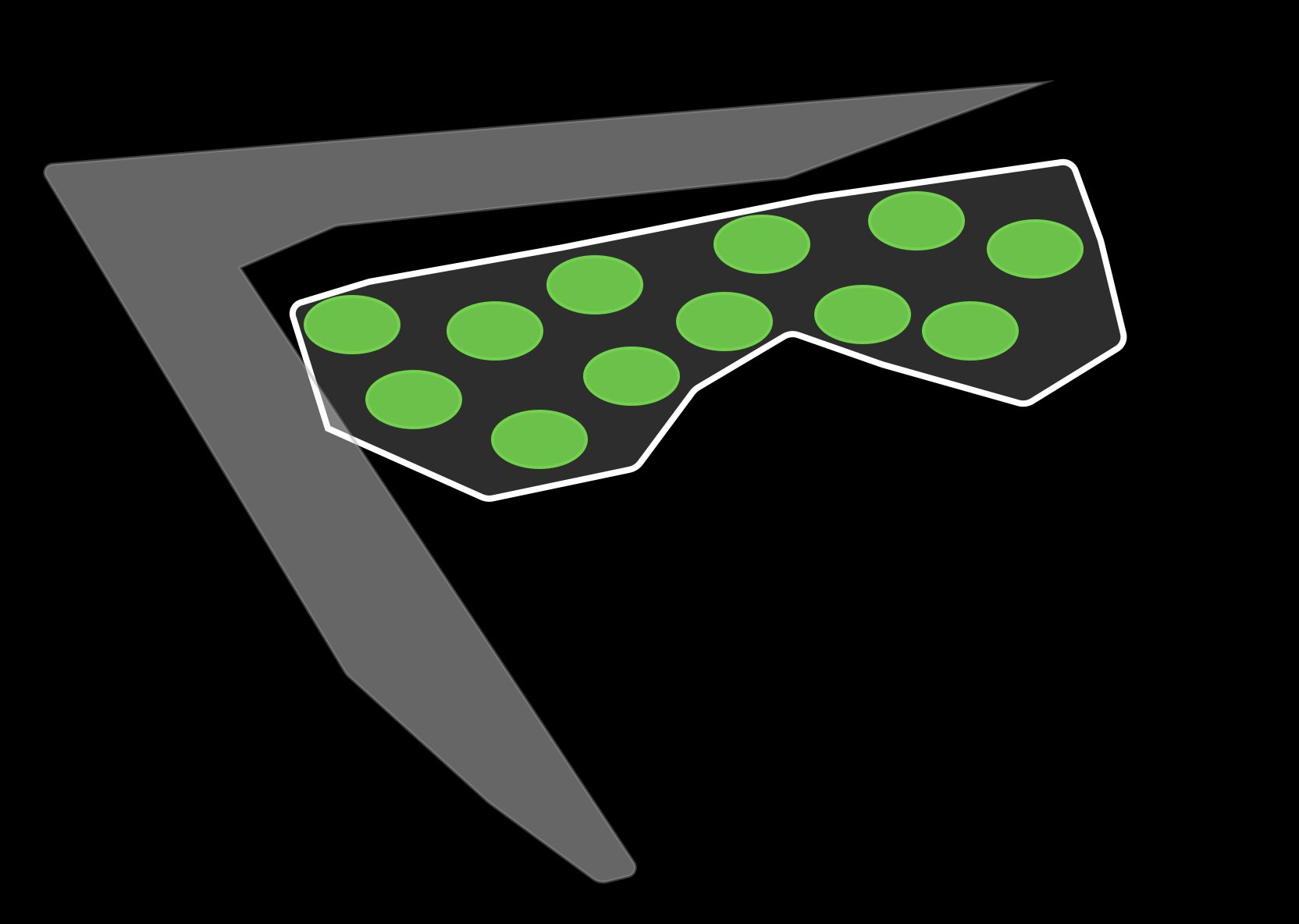
Schedule B
Financial Summary
Project by: The Land Between
Shoreline Re-Naturalization Starter Kit includes: free site visit, customized re-naturalization planting plan for your shoreline property, native plants including free bare root (small) and potted (large) plants and wildflowers, coconut fibre pads to deter grass from growing around new plantings, tree guards for all deciduous trees, mulch for your wildflowers, Plant Care Guide with instructions on how to take care of your new plants, Habitat Creation Guide and a Wildflower Garden Guide.
Our planting plans are created onsite with you and provide detailed information and plans to re-naturalize your shoreline property. We take photos of areas for planting and overlay native plants that are well suited to your property based on site conditions such as soil type and sunlight availability.
We will work with you to create a plan that works for you including options for low growing plants in areas where views are important.
| Item | Quantity | Cost/Item | Subtotal |
|---|---|---|---|
| Starter Kit fee | $250 | ||
| Free potted plants | 10 | $0 | $0 |
| Paid potted plants | 33 | 13.00 | 429.00 |
| Free bareroot plants | 0 | $0 | $0 |
| Free wildflowers | 25 | $0 | $0 |
| Paid wildflowers | 19 | 7.00 | 133.00 |
| Total costs | 812.00 |
Schedule C
Project Agreement
Stewardship Agreement
Please indicate your agreement to this proposed plan by signing the following Stewardship Agreement and submitting it, along with your financial contribution, to:
The Land Between
Box 1368, Haliburton, Ontario, K0M 1S0
Plant Availability
Please note that plant species may need to be changed based on plant stock availability at the time of ordering.
Project Completion
Upon receiving your signed stewardship agreement and financial contribution, a date will be booked for you to pick up your Natural Edge Kit. The Land Between will supply all plants and materials. If you are paying for the planting to be completed for you, a date will be arranged for The Land Between to plant your shoreline, bringing the plants and materials with them. If there are particular dates that you would prefer, we will do our best to accommodate your requests.
The Natural Edge Stewardship Agreement with The Land Between
Agreement made this 3rd Day of the Month of February in the Year 2022.
BETWEEN Nancy McCarthy Stoney Point Marina Road Ontario (Hereinafter called the OWNERS)
AND The Land Between Box 1368, Haliburton, Ontario, K0M 1S0 (Hereinafter called TLB)
WHEREAS the Owners and TLB have met and discussed plans for shoreline naturalization on the specified area(s) in Schedule A existing on the Owners’ land;
WHEREAS the Owners indicate approval of the project as proposed; and
WHEREAS the project is, or will be for the benefit of the Owners and others;
NOW THEREFORE THE PARTIES AGREE AS FOLLOWS:
1. This Agreement shall be in effect for a period of 5 years, commencing with the date of this Agreement.
2. The Owners and TLB agree that the areas where the work is to be performed is as described in Schedule A.
3. The Owners agree to pick up their Natural Edge Starter Kit from TLB’s office and plant their shoreline within two days of receipt. The Owners will provide “after” photos of the work completed to be used for reporting purposes. If the Owners wish to have the planting completed for them, then TLB or it’s contractors, employees and agents will complete the planting at cost, as indicated in Schedule B.
4. If the planting is to be completed by TLB, then the Owners grant TLB, its contractors, employees and agents, the right to enter the property to perform the work agreed upon as outlined in Schedule A. In addition, TLB, its contractors, employees and agents may inspect the work performed for the purposes of monitoring the project and survival assessment, with prior agreement with Owners for date and time of inspection.
5. The Owners agree to contribute the “Landowner contribution” and pay the costs indicated in Schedule B.
6. In instances where the Owners are to pay TLB for work to be performed (outlined in Schedule A), the Owners agree to provide payments to TLB prior to the commencement of that operation. Failure of payment shall constitute a breach of this Agreement and the Owners agree that this Agreement will be terminated and thereupon the Owners agree to pay TLB the estimated costs of the operations of the project completed to date, if any.
7. The Owners agree, if necessary, to perform a reasonable amount of maintenance, which is described in the Native Plant Care Guide, available at naturaledge.watersheds.ca.
8. If a contractor is required to perform the work outlined in Schedule A, then the contractor carrying out the work on the land described will be required to take out and furnish evidence of a comprehensive policy of public liability and property damage coverage. The contractor and their workers will be required to be in good standing with the Workplace Safety and Insurance Board (WSIB) prior to performing the work.
9. The Owners agree not to remove, destroy or alter the project without prior consultation and approval of TLB. Pruning and trimming planted nursery stock, or adding replacement native nursery stock is exempt.
10. The Owners agree not to mow the planted area.
11. The Owners do acknowledge that TLB, its contractors, employees and agents, having performed said works, are not under further obligation with respect to survival of nursery stock, inspection, or maintenance.
12. The Owners, in the absence of negligence, hereby remise, release and forever discharge TLB, its contractors, employees and agents from all claims and demands for injuries, including death, loss, damages and costs in any way related to or connected with installation and maintenance of the work described or resulting from any deleterious effects of the work to the land or to the lands and buildings thereon retained by the Owners.
IN WITNESS WHEREOF the parties have agreed to the contents of this plan; SIGNED:
About this program
About The Land Between
The Land Between is Cottage Country's Conservation Organization. We are a grassroots non-govermennt organization that works to preserve and restore the natural, cultural and socio-economic features of this unique and irreplaceable region in Ontario
This program was created by Watersheds Canada
We believe that every person has the right to access clean and healthy lakes and rivers in Canada. At Watersheds Canada, we work to keep these precious places naturally clean and healthy for people and wildlife to continue using for years to come. We love working with others to meet the needs of local communities, whether you’re a concerned citizen, a landowner, a lake association looking for help, or a coalition of groups interested in activating your local community.

